You’ve created the perfect resume and sent it via email. Now all that’s left to do is find the correct resume paper and make a hard copy.
But maybe you haven’t thought of that part. After all, most people communicate via the internet nowadays and use soft copies to apply for jobs.
Do you even need a hard copy? And is there such a thing as the best resume paper?
The answer to both of those questions is yes.
First impressions are crucial. You don’t want to step in front of your future employer holding wrinkled paper with smudged ink. Instead, you want an extraordinary document, so keep reading to find out how to pick the right resume paper and impress hiring managers!
Key Takeaways
Resume paper is a special kind of paper used for resumes and cover letters.
Choosing the correct resume paper can improve your chances of grabbing the attention of recruiters.
Factors that determine the quality of resume paper are weight, size, color, and texture.
Cotton paper is one of the toughest and most durable. It’s also premium, soft to the touch, and crisp. Higher percentage of cotton means higher quality.
Recruiters prefer white, standard size, 24 lb (or more) resume paper.
If you aren’t familiar with the printing setup, let a professional print your resume.
What is Resume Paper?

As the name suggests, resume paper is a special kind of paper used for printing resumes and cover letters. By using the right kind of paper, you can make your application more resistant and durable, while its premium look and feel will leave a better impression on the recruiter.
Now, you’re probably wondering when you would even need a physical resume copy. For starters, when going to an interview, you should always have a hard copy of your resume with you.
Another occasion when you’ll need a hard copy of your resume is at job fairs. If you’re submitting your application letter to multiple recruiters, you want it to be as good as possible, which makes high-quality resume paper a must-have. The same goes for networking events for job seekers.
Does the Type of Resume Paper Matter?
What do you think happens when a recruiter, after handling a bunch of ordinary paper resumes, grabs a weighty, textured, premium one? That resume instantly sets itself apart and already gives its candidate a head start in the application process.
Everything from the color of the paper to its weight, texture, size, and even cotton content can give you an edge with the hiring managers.
Not only that, but getting some things wrong with your resume paper could get your application discarded. For example, not using the proper resume paper size can make your resume difficult to file and scan, which could result in it being scrapped.
So, let's go over all of the important features and learn how to choose the best resume paper for your resume.
Factors that Determine Resume Paper Quality
The main characteristics that determine the quality of a resume paper are:
Factors that Determine Resume Paper Quality
Weight
Size
Color
Texture
Figuring out the right paper size is usually straightforward. However, when it comes to weight, color, and texture, things aren’t that obvious. There are many elements to consider, such as your location, field of work, resume design, and even personal preferences.
Ultimately, there’s no definitive answer, as the choice depends on your needs and circumstances. Let’s get into the details.
Resume Paper Weight
Paper weight is calculated with a pounds-per-ream formula. That means that a standard 20 lb copy paper weighs 20 pounds per 500 pages. While it might be tempting to just print your resume on regular paper, there are several good reasons to opt for heavier paper.
A slight increase in weight from 20 lb to 24 lb paper is enough to make it a better choice right off the bat. Firstly, even though it’s heavier, this type of paper still works well with home printers. On the other hand, it's thicker and less likely to wrinkle because of that.
Apart from that practical reason, 24 lb paper is more formal. For example, heavier paper is often used for important documents or business stationery. It also feels better in the hand and to the eye. All of that makes it much more likely to grab the recruiter’s attention than the standard 20 lb paper.
If you want to go the truly premium route, opt for a resume paper with 32 lb weight. This paper is heavy, opaque, and formal, and it’s an exceptional choice. Keep in mind that it’s more expensive, and you should print on it using a commercial printer. However, going the extra mile will be worth it in the end.
Resume Paper Size
The size of your resume paper is one area where you should avoid experimenting. This is the time when you do not want to stand out, and you should instead stick to the standards.
In the US and Canada, the standard resume paper size is 8.5 x 11 inches, also known as "letter size." That’s it. Anything different, and at the very least, you will annoy the hiring manager by making your application harder to file, organize, scan, or send to colleagues.
In Europe and Asia, the standard paper size in the professional environment is only slightly different than in the US. Most countries and regions there use the A-format. Your resume paper should be of size A4, which is a bit narrower and longer than letter size, coming in at 297 x 210 mm. (For comparison, 8.5 x 11 inches translates to 279 x 216 mm.)
Resume Paper Color
When we think of the color of paper, we immediately think of white paper. However, pick up a book by any major publisher, and you’ll notice that it has creamy, off-white pages.
There are pros and cons to using white, a shade of white, or a different color paper for your resume. Let’s find out what they are.
White Resume Paper
The reason why the majority of the books have creamy-colored paper is because of eye strain. Pure white (and pure black, for that matter) causes eye strain. Creamy colors are easier on the eyes.
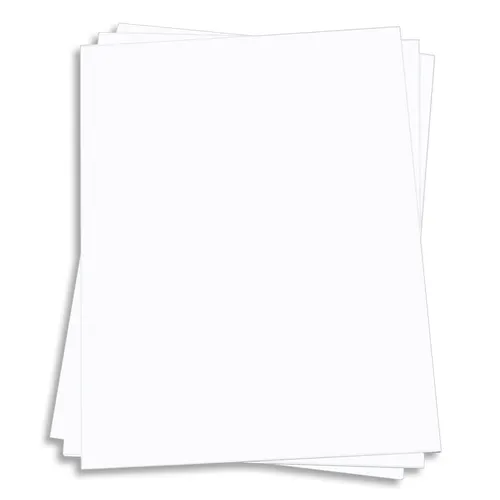
Still, there are valid reasons to use purely white resume paper. It works best if the design of your resume features other colors. If you used word processing or design software to create a soft copy with a white background, printing it on paper of any other color could skew the final result.
Ivory Resume Paper
Ivory-colored paper is good for all the reasons that white paper isn’t. It’s much more pleasant to read since it doesn’t strain the reader’s eyes.
But once again, if your resume features a unique color design, you probably want to go with white paper.
That makes ivory the best color for resume paper if you have only black text and graphic elements. Of course, you can always include colors in your resume design and print it on ivory paper. Just keep in mind that they need to match.
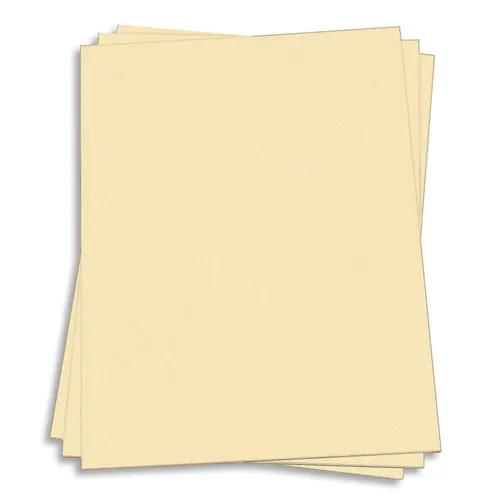
Other Colors
Even though different colors of resume paper might seem like an attractive choice, they are often seen as unprofessional in many industries.
You could try to be more daring if you’re in a creative field like graphic design. Even then, stick to lighter colors. For example, light blue is a safe and neutral option.
However, don’t use multiple colors, shaded columns, borders, and similar effects on your resume unless you know what you’re doing. Also, always print a test page and see how it looks on different papers.
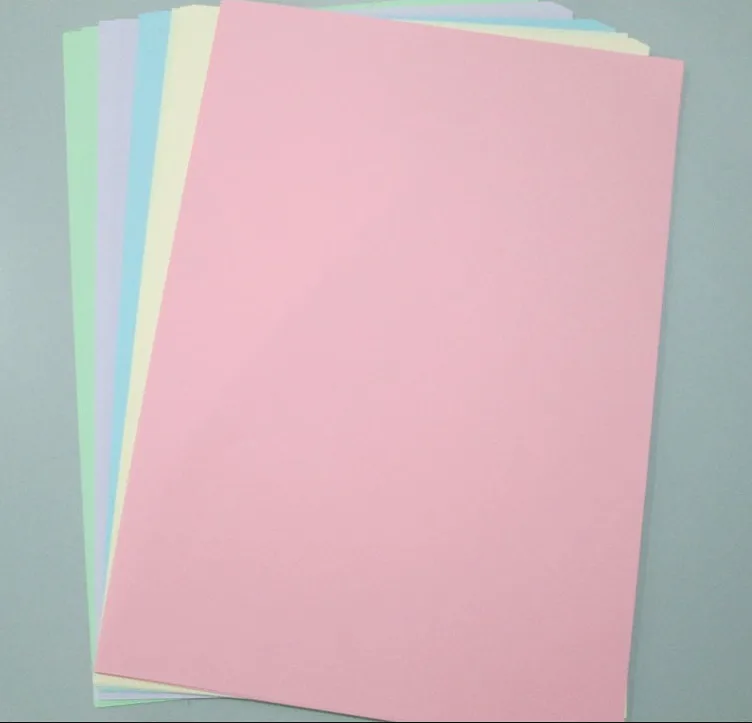
Resume Paper Texture
The devil is in the details, and texture is exactly the kind of subtle detail that can make or break your application. Texture makes your paper look and feel different, which allows you to give your document a much-needed personal touch.
Plain Resume Paper
Plain texture is a safe pick for your resume paper, as it's the one most commonly used in professional settings. You might not stand out from the crowd, but there’s no risk of leaving the wrong impression either.
This is a standard texture that works well with any type of resume format. There’s also less risk of ink spills than with other, more complex textures.

Granite Resume Paper
Granite paper texture strikes a fine balance between traditional and modern resume paper. It aims to bring the best of both worlds together without leaning toward either side.
This texture is not only original and memorable but also simple and environmentally friendly, since granite paper is often made from recycled materials. That fact alone could earn you bonus points with the recruiter.
This paper is also nice to the touch while still being easy to print on. The only “con” is its slightly darker shade. Be careful about printing lighter content on this paper, as it might end up being less visible.
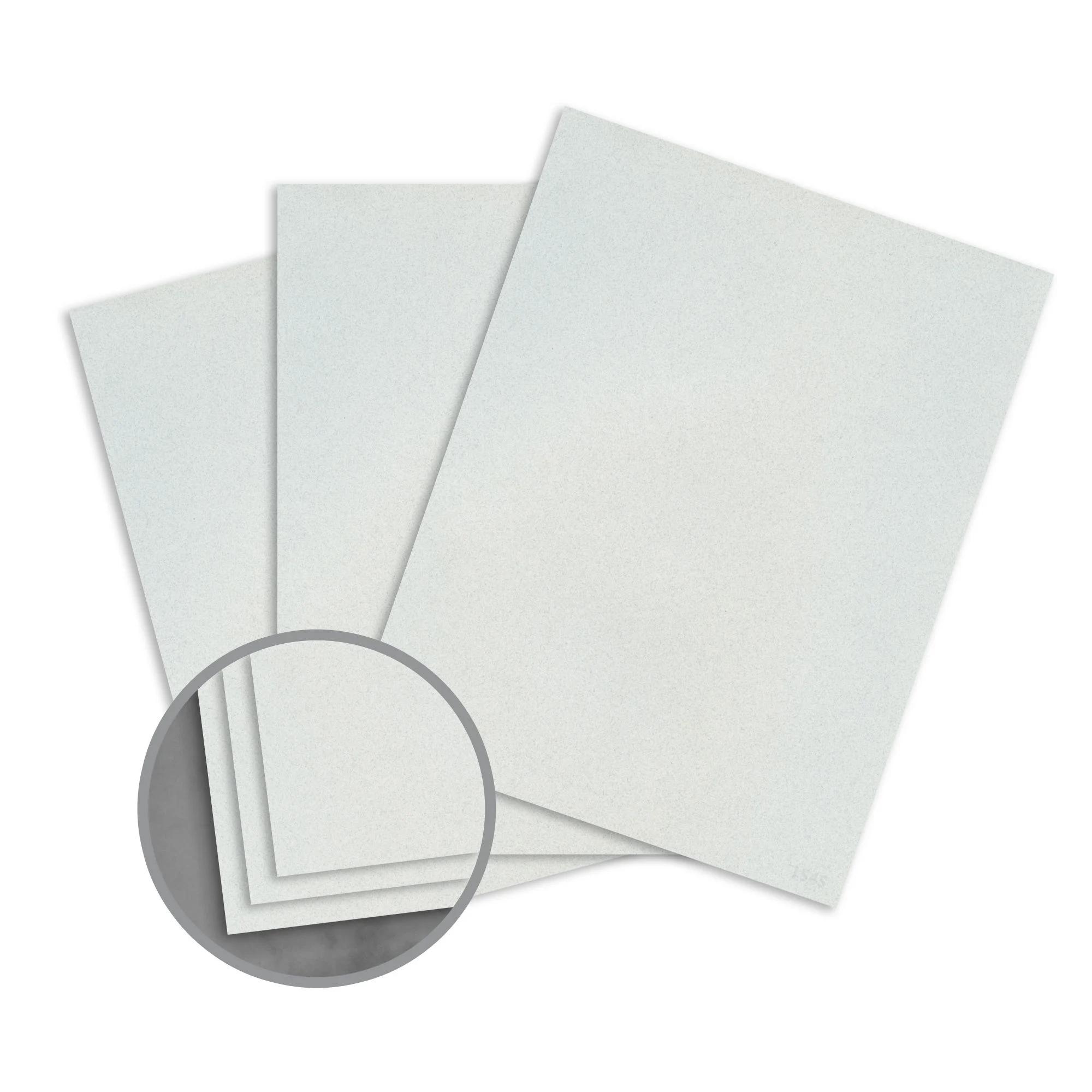
Laid Resume Paper
This type of texture gives resume paper a traditional, aged appearance. It has emphasized parallel lines and looks similar to how paper looked when it was first invented. All of that gives it a sophisticated feel and makes it pleasant to the touch.
On the other hand, such a rough and complicated texture makes this type of paper hard to print on and prone to errors. It can also be rather pricey.

Linen Resume Paper
The texture of linen paper is similar to that of laid paper in many ways. The difference is that the lines on linen paper are more subtle, and the finish is finer. That makes this type of texture a safer choice if you want the look of age and sophistication but don’t want to risk overdoing it.
Linen texture is also often used for business stationery. Envelopes, invoices, business cards, and similar items often feature this texture, which is why it’s one of the best ones for your application.
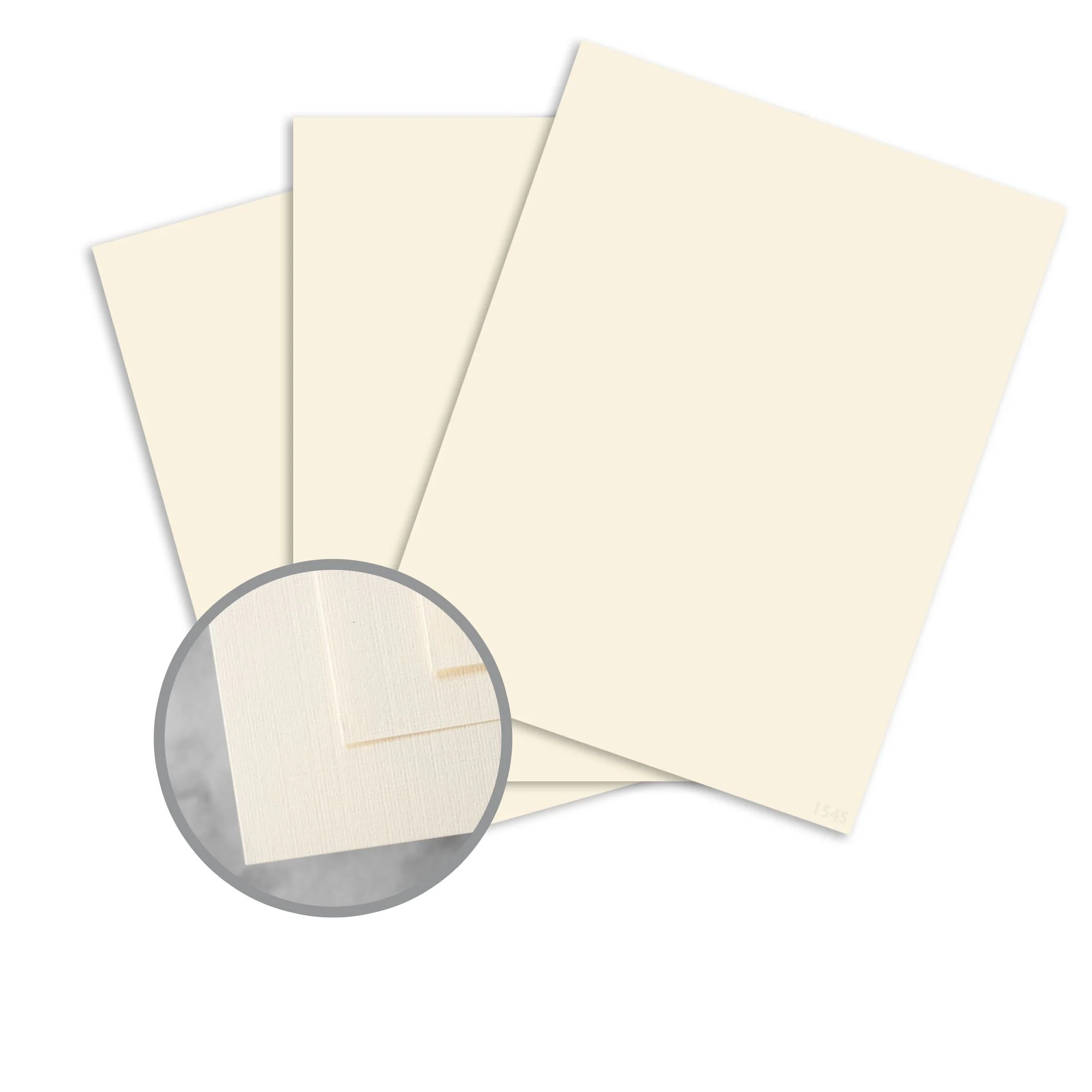
Parchment Resume Paper
Parchment paper is often used for certifications and diplomas. It’s also used for business stationery as it features a classic, stable, and professional tone. All of that gives this paper an official appearance, making it a smart choice for your resume.
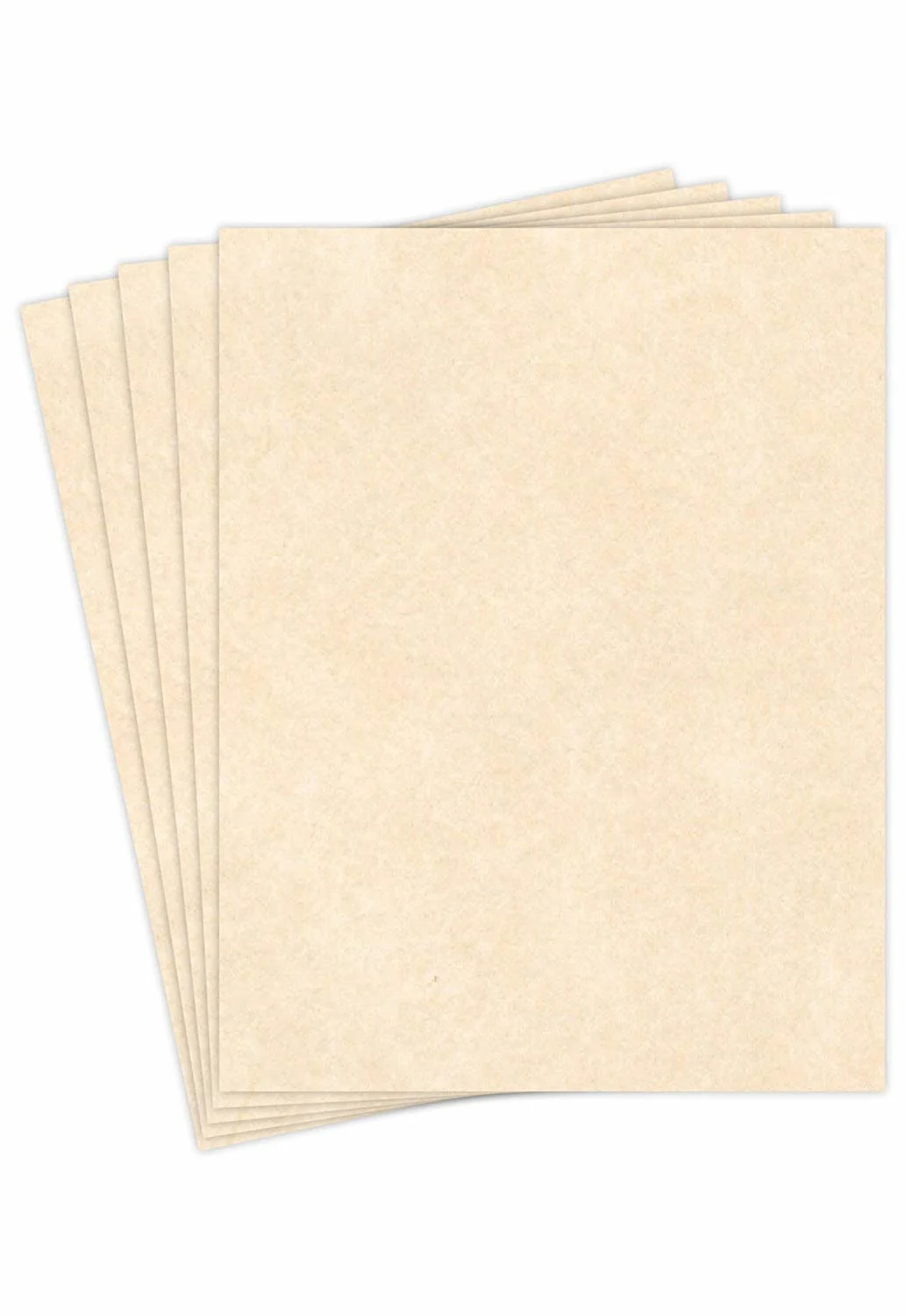
Cotton Resume Paper
Last, but definitely not least, we have cotton paper. It’s superior to wood-based paper in many ways. Cotton paper is stronger and will last longer than regular 20 lb office paper. It’s also soft but crisp when printed on, making it one of the best choices.
All of that makes it more expensive, which is why manufacturers often make cotton paper as a blend. You can find paper with anywhere from 25% to 100% cotton content. Naturally, a higher percentage of cotton makes for better paper.
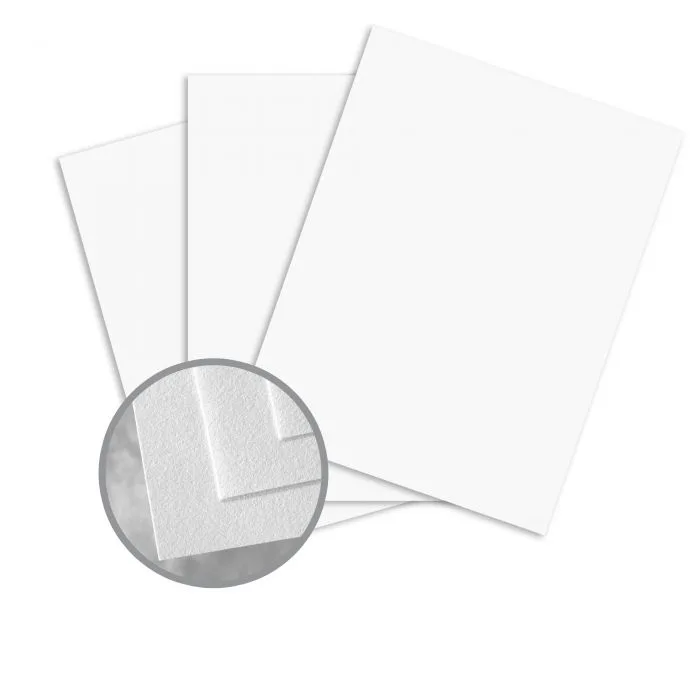
How Much Cotton Content Should Resume Paper Have?
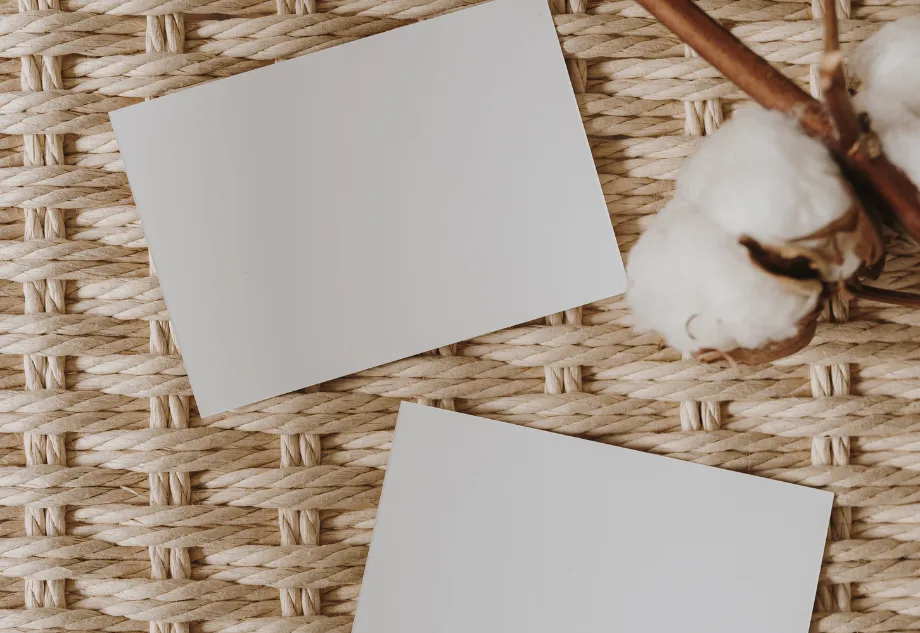
We’ve already established how cotton paper is a whole different game compared to wood pulp paper. It’s tougher and more durable without sacrificing its premium appearance. This type of paper also absorbs ink better, making it an overall top choice in most cases.
Cotton paper is considered an elegant option. It’s soft to the touch, and proper care will ensure it lasts for hundreds of years without deteriorating. It’s also much less likely to change color or fade, which, coupled with its excellent absorption properties, makes it great for printing.
If you opt for 100% cotton paper, you’ll go "tree-free," not to mention how a single percentage of cotton adds one year of resistance to degradation. That’s why you should always go with the highest percentage of cotton paper you can find (at least 75%), and your resume will look truly noteworthy.
How to Choose Resume Paper Type
When choosing the best type of paper for your resume, you need to take multiple elements into consideration. Apart from going with the standard size, you can choose between various paper weights, colors, and textures. However, don’t look at those characteristics on their own, but also keep the position you’re applying for in mind.
For example, if you’re a high-level executive, you’d want to go with the highest-quality, most premium paper that looks professional. On the flip side, go with a safer and more modest approach if you’re applying for an entry-level position. Simple white 24 lb paper will often be enough while still making you stand out.
Here are some important tips and tricks that will help you make sure your physical resume looks and feels the best it can:
Tips for Choosing Resume Paper
Try not to save money on resume paper. If you find 32 lb paper too expensive, at least go for 24 lb paper and avoid the typical, plain, 20 lb office paper.
Don’t try to stand out too much. Using the wrong paper size or opting for a decorative paper in hopes of grabbing the hiring manager’s attention might get your resume discarded right from the beginning.
Have your resume design in mind. If your resume features shades and several colors in addition to black writing, it’s probably best to go with white paper.
Get a few different types of paper and print your resume on them. Only after you have a hard copy of your resume in front of you will you be able to truly see what it looks and feels like.
What Type of Resume Paper do Recruiters Prefer?
When it comes to weight and size, recruiters prefer 24–32 lb paper and standard paper size. However, when it comes to color and texture, the answer isn’t as clear-cut.
A study done with a sample of 90 respondents and 12 applicants gives us some information to work with. The study found that resumes printed on white paper performed best, with 41% of respondents accepting it as their first pick. On the other hand, 32% of them chose to reject candidates that had light green, light yellow, and pink paper.
While the study didn’t involve ivory paper, the difference between white and colored paper is obvious. In conclusion, paper that’s used in a business environment is generally a safe choice.
How to Print a Paper Resume
So, you just click print, and you’re done, right?
Unless you know what you’re doing, the answer is no.
Preparing material for printing can be a challenging endeavor for someone with no work experience.
For starters, we already touched upon how heavier paper requires a commercial printer. Unless you have access to one, you won’t be able to print your resume on 32 lb paper even if you wanted to.
If you decide on a lighter paper and want to use your home printer, you’ll have to adjust numerous settings. Do you know what DPI is and why its optimal value for printing is 300? Are you familiar with the difference between standard black and rich black? How about the difference between RGB and CMYK models?
If all of that sounds foreign to you, it’s best to let a professional do it. While it’s not extremely complicated to learn how to print your own resume, there are many steps to pay attention to. A professional will do it quickly and efficiently, and you’ll get the highest-quality physical resume possible. Just make sure to clearly communicate your preferences to them.
Where to Get Resume Paper?

There are many options for buying resume paper. If you decide on the more common white paper, you can go to Target, Walmart, or your local office supply store.
For some of the more premium resume paper options, there are professional office supply stores. FedEx Office, Office Depot, Staples, and Xero all sell high-quality paper.
One thing to keep an eye out when opting for more affordable options is watermarks. Some manufacturers add watermarks to their cheaper premium paper. So, if you don’t want your resume to have the paper manufacturer’s watermark, you might have to pay a bit more.
Another viable option is to buy your resume paper online. Amazon, for example, offers worldwide shipping, so you can get premium paper sent to you regardless of where you’re located.
Closing Thoughts
Creating a high-quality hard copy of your resume is much more important than many applicants think. There are a lot of elements that go into printing a resume, and it’s not as simple as printing it with a home printer.
That’s why we’ve created this handy guide. You now know why it’s important to have a physical resume. Not only that, but you know when to use it and how to create the best one possible.
You’re now just one printer away from having an exceptional application that will dazzle the recruiters. Best of luck!
Resume Paper FAQ
Here are our experts’ answers to the most frequently asked questions about resume paper:
#1. Do I need a physical copy of my resume?
A physical copy of your resume is needed when you’re going to an interview, a job fair, or a networking event. It’s recommended to take more than one copy with you in case you’d like to hand it out to multiple people.
#2. Does resume paper make a difference?
Resume paper can be the deciding factor between getting the attention of a recruiter and having your application discarded. It can make you stand out from other candidates who use common office paper, thus making your application memorable.
#3. Can I use regular paper for my resume?
It’s not always recommended to use regular paper for your resume. It's transparent, it crumples easily, and it’s plain. At least go for heavier 24 lb or 32 lb paper. And to make your application even more prominent, infuse it with a bit of personality by going for textured paper and maybe an ivory color over pure white.
#4. Should I staple my resume?
In most cases, your resume should be one page long. However, if you have to have more than one page, it’s better to use a paperclip than to staple the pages together. Paperclips give recruiters the option to separate the pages without damaging them if they want to scan them individually, for example.


